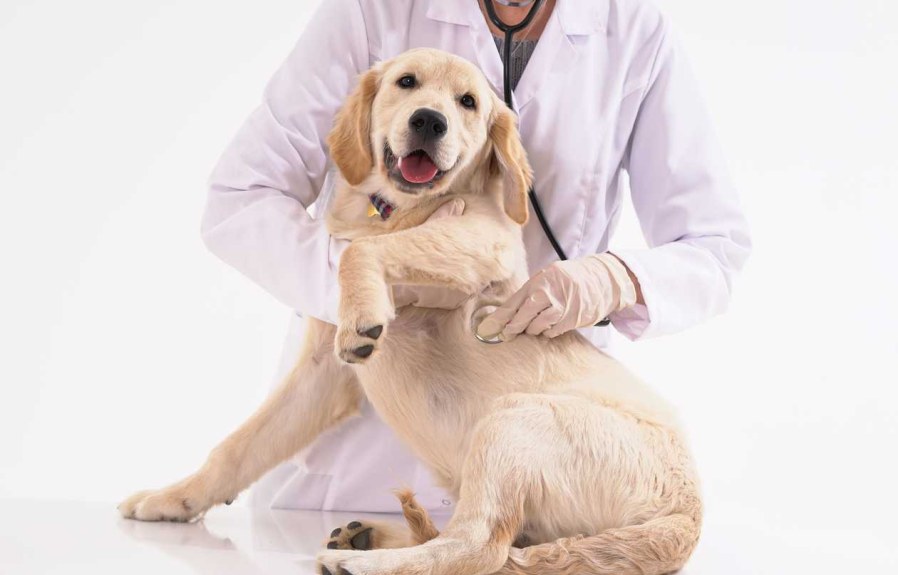Pet insurance typically covers veterinary expenses, including accidents, illnesses, and preventive care such as vaccinations and wellness exams. Pets are not just our companions; they become cherished family members.
However, it’s no secret that owning a pet comes with various responsibilities, including providing essential healthcare. While we all hope for our furry friends to stay healthy, accidents and illnesses can happen unexpectedly, resulting in expensive veterinary bills. This is where pet insurance steps in.
Pet insurance is a financial safety net that helps pet owners cover the costs of veterinary care. By offering coverage for accidents, illnesses, and preventive treatments, pet insurance provides peace of mind and helps to ensure that our pets receive the best possible care without financial strain. We will explore what pet insurance typically covers and why it is an important consideration for every pet owner.
The Basics Of Pet Insurance
Pet insurance typically covers veterinary expenses such as accidents, illnesses, and wellness care for your furry companion. This coverage helps pet owners manage unexpected costs while prioritizing their pet’s health and well-being. It provides peace of mind knowing that medical expenses are taken care of in times of need.
Pet insurance is a service designed to help pet owners cover the cost of veterinary expenses in case their pets fall ill or get injured. Having pet insurance can provide peace of mind by ensuring your pet receives the necessary medical care without breaking the bank. Pet insurance can help alleviate financial stress in unexpected situations where your pet needs emergency treatment or ongoing care.Typical Coverage For Pet Insurance
1. Veterinary Fees: Covers costs for consultations, treatments, surgeries, and medications. 2. Accident and Injury: Includes coverage for injuries resulting from accidents, such as broken bones or wounds. 3. Illness: Covers treatments for various illnesses and chronic conditions your pet may develop. 4. Hereditary Conditions: Some policies cover hereditary or congenital conditions that may be predisposed in certain breeds. 5. Wellness and Preventive care: Some plans may offer coverage for routine check-ups, vaccinations, and preventive treatments. 6. Dental care: Some policies cover dental treatments such as cleanings, extractions, and oral surgeries. 7. Prescription Medications: Coverage for medications prescribed by a veterinarian for your pet’s health. 8. Emergency Boarding: Coverage for boarding costs in case you are hospitalized and cannot care for your pet. 9. Behavioral Therapy: Some pet insurance plans cover behavioral therapy sessions to address anxiety or other behavioral issues.Things To Consider
1. Deductibles: Select a plan with deductibles that align with your budget and needs. 2. Coverage Limits: Be aware of annual and lifetime coverage limits to ensure your pet’s health needs are adequately met. 3. Exclusions: Understand what conditions or treatments may not be covered by your policy. 4. Waiting Periods: Be aware of any waiting periods before your coverage becomes effective. 5. Age Restrictions: Some policies may have age restrictions, so ensure you enroll your pet while they are still young for better coverage.
Credit: stpaulpet.com
Types Of Coverage
Pet insurance typically covers a range of treatments and services, including vet fees, surgeries, medications, and emergency care, ensuring your furry friend receives the necessary medical attention. Additionally, some policies may also provide coverage for preventive care, such as vaccinations and routine check-ups, helping to keep your pet healthy and happy.
Pet insurance provides financial protection for unforeseen circumstances that may arise in your furry friend’s life. There are typically two types of coverage options available: Accident-Only Coverage and Accident and Illness Coverage. These options offer different levels of protection and benefits for your pet, ensuring their health and well-being are always a priority.Accident-only Coverage
Accidents happen, regardless of how careful we are with our pets. This type of coverage primarily focuses on injuries resulting from accidents that may occur. It typically includes coverage for unexpected incidents such as broken bones, lacerations, ingestion of foreign objects, or even injuries caused by car accidents. Accident-Only Coverage is a budget-friendly option that provides essential protection for unexpected emergencies.Accident And Illness Coverage
Accidents, unfortunately, are not the only risks that our pets face. Illnesses can also take a toll on their health. Accident and Illness Coverage offer a more comprehensive level of protection, encompassing not only accidents but also various illnesses that your pet may encounter throughout their life. This coverage typically includes treatments for chronic conditions, such as allergies, diabetes, or cancer, as well as coverage for visits to the veterinarian for routine check-ups, vaccinations, and preventive care.Which Coverage Is Right For You?
The choice between Accident-Only Coverage and Accident and Illness Coverage ultimately depends on your pet’s individual needs and your budget. If you’re primarily concerned about potential accidents or have a limited budget, Accident-Only Coverage may be a suitable option. On the other hand, if you want more extensive coverage that includes accidents and illnesses, Accident and Illness Coverage is the way to go. Whichever option you choose, pet insurance provides peace of mind, knowing that you can give your pet the best care possible without worrying about the financial burden along the way.What Is Typically Covered
Understanding what pet insurance typically covers is important for pet owners to ensure they can provide the best care for their furry companions. Here’s a breakdown of what is typically covered by pet insurance.
Veterinary Visits
Pet insurance usually covers the costs of standard veterinary visits, including routine exams, vaccinations, and preventive care such as flea and tick treatments.
Surgeries And Procedures
Pet insurance often covers the expenses related to surgeries and procedures, such as emergency surgeries, dental procedures, and specialized treatments like chemotherapy.
Additional Coverage Options
When selecting pet insurance, it’s essential to consider the additional coverage options that can provide comprehensive protection for your furry friend. Alongside the standard coverage for accidents and illnesses, many pet insurance plans offer add-on options that include dental care and prescription medications.
Dental Care
The dental care add-on option typically covers a range of dental procedures for your pet, including routine cleanings, extractions, and treatment for dental diseases. By adding this coverage to your pet insurance plan, you can ensure that your pet’s dental health is prioritized, potentially reducing the risk of future dental issues.
Prescription Medications
With the prescription medications add-on, your pet insurance can cover the cost of necessary medications prescribed by your veterinarian. This can encompass medications for chronic conditions, post-surgery medications, and other essential prescriptions, ensuring that your pet’s medical needs are fully supported without incurring significant out-of-pocket expenses.
Exclusions And Limitations
When it comes to pet insurance, it’s important to understand the exclusions and limitations of coverage. While pet insurance provides valuable financial protection, it’s not a guarantee that every veterinary expense will be covered. Insurance companies have their own terms and conditions, and certain conditions or treatments may be excluded from coverage.
Pre-existing Conditions
A pre-existing condition refers to a health issue that your pet had before you purchased the insurance policy. Sadly, pet insurance does not typically cover pre-existing conditions. Whether it’s a chronic illness, a congenital defect, or an injury that occurred prior to coverage, any expenses related to these conditions are generally excluded. It’s crucial to disclose your pet’s medical history accurately during the insurance application process to avoid any potential issues with claims down the road.
Breed-specific Conditions
Some dog breeds are susceptible to certain hereditary or breed-specific conditions. While pet insurance covers a wide range of illnesses and injuries, these breed-specific conditions may come with limitations. Insurance providers may either exclude coverage for these conditions entirely or impose limitations, such as a waiting period before coverage kicks in. These limitations vary by insurance companies, so it’s vital to review the specific terms and conditions of the policy you’re considering.
Examples of breed-specific conditions include hip dysplasia in large dog breeds, patellar luxation in small dog breeds, and brachycephalic airway syndrome in breeds with flat faces like Bulldogs and Pugs. Understanding the potential limitations for your pet’s breed is essential to make an informed decision when choosing a pet insurance policy.

Credit: petwellnessdirect.com
How To Choose The Right Policy
Choosing the right pet insurance policy requires careful consideration of your pet’s specific needs. By assessing their requirements and comparing different insurance providers, you can select the policy that offers the best coverage for your furry friend. Let’s take a look at how you can choose the right pet insurance policy for your beloved companion.
Assess Your Pet’s Needs
Before you start comparing insurance policies, it’s important to assess your pet’s needs. Each pet is unique and may require different types of coverage. Take into account their breed, age, pre-existing conditions, and any potential risks they may face. For instance, if you have a young and active dog, you might want to prioritize coverage for accidents and injuries. On the other hand, if you have an older cat, you may want to consider coverage for chronic conditions and preventive care.
Compare Different Insurance Providers
When comparing different insurance providers, there are a few key factors to consider:
- Policy Coverage: Look for a policy that covers accidents, illnesses, and routine care. Make sure that the policy includes the specific treatments, medications, and procedures that your pet is likely to need based on their breed and age.
- Annual Limits: Check the maximum amount the insurance provider will pay out each year. Ensure that the limit is sufficient to cover any anticipated medical expenses for your pet.
- Deductibles and Co-pays: Evaluate the deductibles and co-pays associated with each policy. A higher deductible may result in lower monthly premiums, but you’ll need to pay more out of pocket in case of a claim.
- Exclusions and Waiting Periods: Review the policy’s exclusions and waiting periods. Some policies may not cover certain conditions or have waiting periods before coverage takes effect.
Additionally, take into consideration any additional benefits and features offered by the insurance provider. This may include coverage for alternative therapies, behavioral training, or even providing assistance in case your pet goes missing.
By comparing these factors across different insurance providers, you can narrow down your options and find the policy that best suits your pet’s needs as well as your budget.
Costs Of Pet Insurance
Understanding the costs associated with pet insurance is crucial for pet owners to make informed decisions. Pet insurance typically covers a range of expenses, including monthly premiums, deductibles, and co-pays. Evaluating these costs can help determine the level of coverage that best fits your budget and your pet’s needs.
Monthly Premiums
Pet insurance providers offer various monthly premium options, which are usually based on factors such as the pet’s age, breed, and location. Additionally, the level of coverage and the chosen deductible can impact the monthly premium amount. Comparing different plans can help pet owners find a suitable premium that aligns with their financial capability.
Deductibles And Co-pays
When choosing a pet insurance plan, understanding the deductible and co-pay structure is essential. Deductibles are the amount a pet owner must pay before the insurance coverage kicks in, while co-pays refer to the percentage of covered expenses that the pet owner is responsible for. Finding a balance between deductibles and co-pays is important to ensure that pet insurance remains affordable while offering adequate coverage.
Making A Claim
When it comes to making a claim with your pet insurance, the process should be straightforward and hassle-free. Understanding how to file a claim and the reimbursement process is essential for pet owners.
Filing A Claim
Filing a claim with your pet insurance typically involves providing necessary documents and information. Contact your insurance provider to initiate the claim process.
Reimbursement Process
The reimbursement process involves submitting invoices, veterinary reports, and any related documentation to your insurance provider. After review, you’ll receive reimbursement for the covered expenses.

Credit: http://www.amazon.com
Frequently Asked Questions Of What Does Pet Insurance Usually Cover
What Does Pet Insurance Typically Cover?
Pet insurance usually covers vet expenses, including illnesses, injuries, and surgeries. It may also include medications, diagnostic tests, and some preventive care, such as vaccinations and flea/tick prevention. Some policies also cover alternative therapies like acupuncture and chiropractic care.
Are Routine Check-ups And Vaccinations Covered?
Most pet insurance plans do not cover routine check-ups and vaccinations. However, some policies offer optional riders that can be purchased to cover routine preventive care, such as vaccinations and annual check-ups. It’s essential to review the policy details to understand what preventive care is included.
Does Pet Insurance Cover Pre-existing Conditions?
No, pet insurance typically does not cover pre-existing conditions. It’s important to enroll your pet in insurance early to avoid potential exclusions for pre-existing conditions. Make sure to review the policy terms and understand the waiting periods and exclusions for pre-existing conditions.
Will Pet Insurance Cover Hereditary Or Congenital Conditions?
Some pet insurance plans cover hereditary and congenital conditions, while others may not. It’s essential to review the policy details to understand the coverage for hereditary and congenital conditions. Ensure that you choose a plan that provides comprehensive coverage for potential hereditary and congenital conditions.
Conclusion
Pet insurance can provide invaluable peace of mind by covering unexpected veterinary costs. From medical treatments to surgeries, pet insurance typically covers a wide range of conditions and accidents. Understanding your pet insurance coverage is crucial to ensure that your furry friend receives proper care when they need it the most.
Remember to review the policy to know the limits, deductibles, and exclusions. Taking care of your pet’s health is a lifelong commitment, and pet insurance helps you to provide the best care possible.



Leave a comment